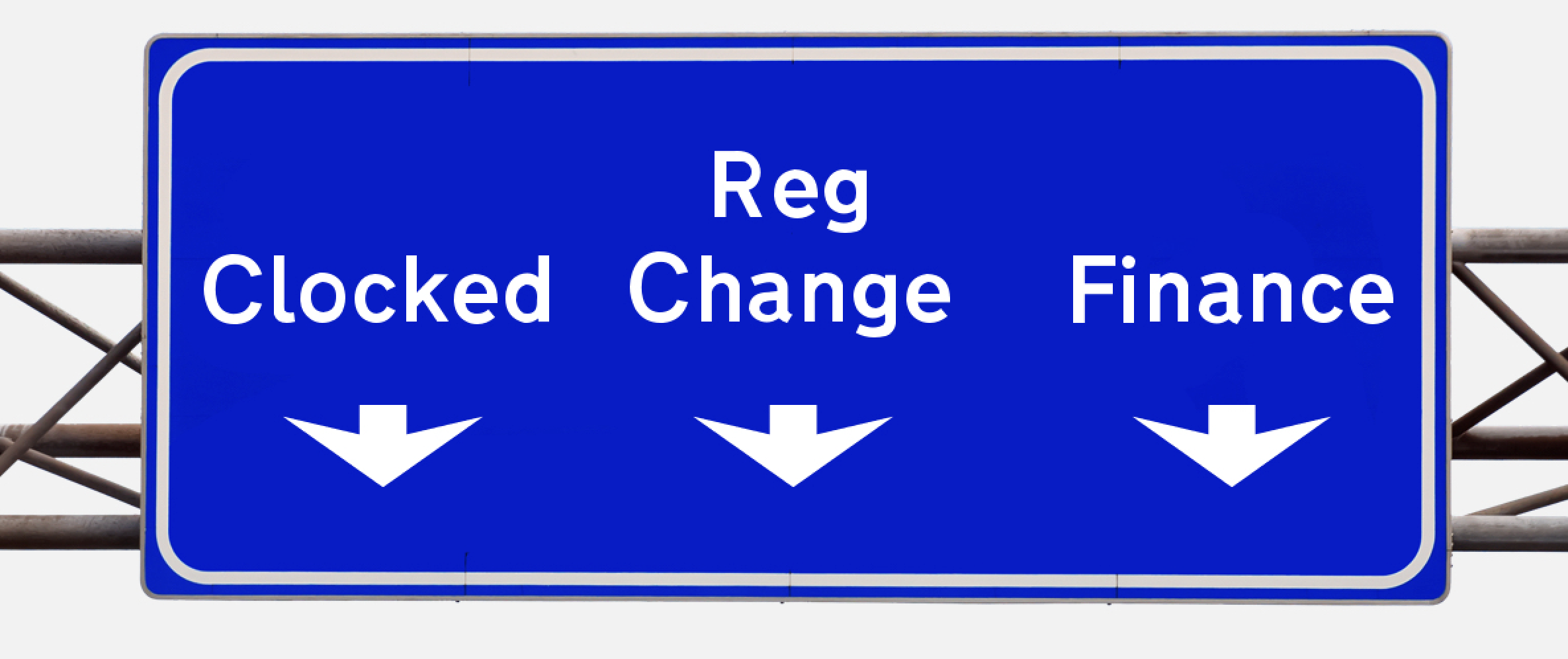
DVLA MOT History: A Crucial First Step
To start, checking the MOT history is a must. The DVLA provides an online service that allows you to look up the MOT status of any vehicle instantly.
This service will show if the car has passed or failed previous MOT tests and give you the reasons for any failures. For example, imagine you’re considering a buying a car privately in Hexham. Upon checking its MOT history, you find out it failed a test two years ago for brake issues, but was repaired and passed in subsequent tests. This gives you peace of mind knowing that the car was properly maintained.
When considering a car with a valid 12-month MOT, it’s important to understand the difference between failures and advisories. While an advisory isn't necessarily a deal-breaker, it’s essential to assess whether the issue is minor or a major concern. For example, a car may have advisories like "the seatbelt could not be tested" due to baby seats being installed, which can prevent the tester from properly checking the seatbelt functionality. This is a relatively minor issue. However, an advisory such as "light misting of oil covering the engine" should raise a red flag, as it could indicate an impending oil leak. Being able to distinguish between the two can help you make a more informed decision when purchasing or maintaining a vehicle.
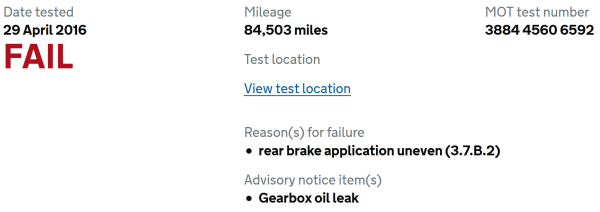
HPI check
One of the most important checks is the HPI check, which provides a comprehensive history of the vehicle. This check will confirm if the car has been stolen, written off, or has any dubious history.
For instance, you might be looking at a used BMW 3 Series in Hexham, and an HPI check reveals that the car was previously written off due to an accident. This information allows you to make an informed decision—saving you from potential legal trouble or costly repairs later on. - Insurance prices tend to increase with accident damage cars. Maintenance costs may be greater due to wheel allignment issues, unsecure panels.
An HPI check is an essential tool for anyone looking to purchase a used vehicle, as it provides key information about the car’s history. These checks are typically color-coded for easy understanding: green indicates everything is clear and there are no issues, while red signals potential problems, such as outstanding finance or a history of accidents. Orange warnings fall in between, offering important details that may not necessarily be deal-breakers but still warrant attention. For example, an orange warning might indicate that the vehicle has had a plate change, which could mean the car previously had a personalised number plate. While this isn’t necessarily a red flag, it’s something to keep in mind. Additionally, if the check reveals the car’s origin as being outside the UK, marked by an orange import warning, this could raise questions. While it may be perfectly legitimate, it’s important to ask the seller for more information, as vehicles imported from abroad could have a different maintenance history or even hidden issues. Overall, understanding what each color code represents in an HPI check can help you make a more informed decision and highlight any potential red flags to address before purchasing a car. Always take the time to investigate further if you see an orange or red warning.
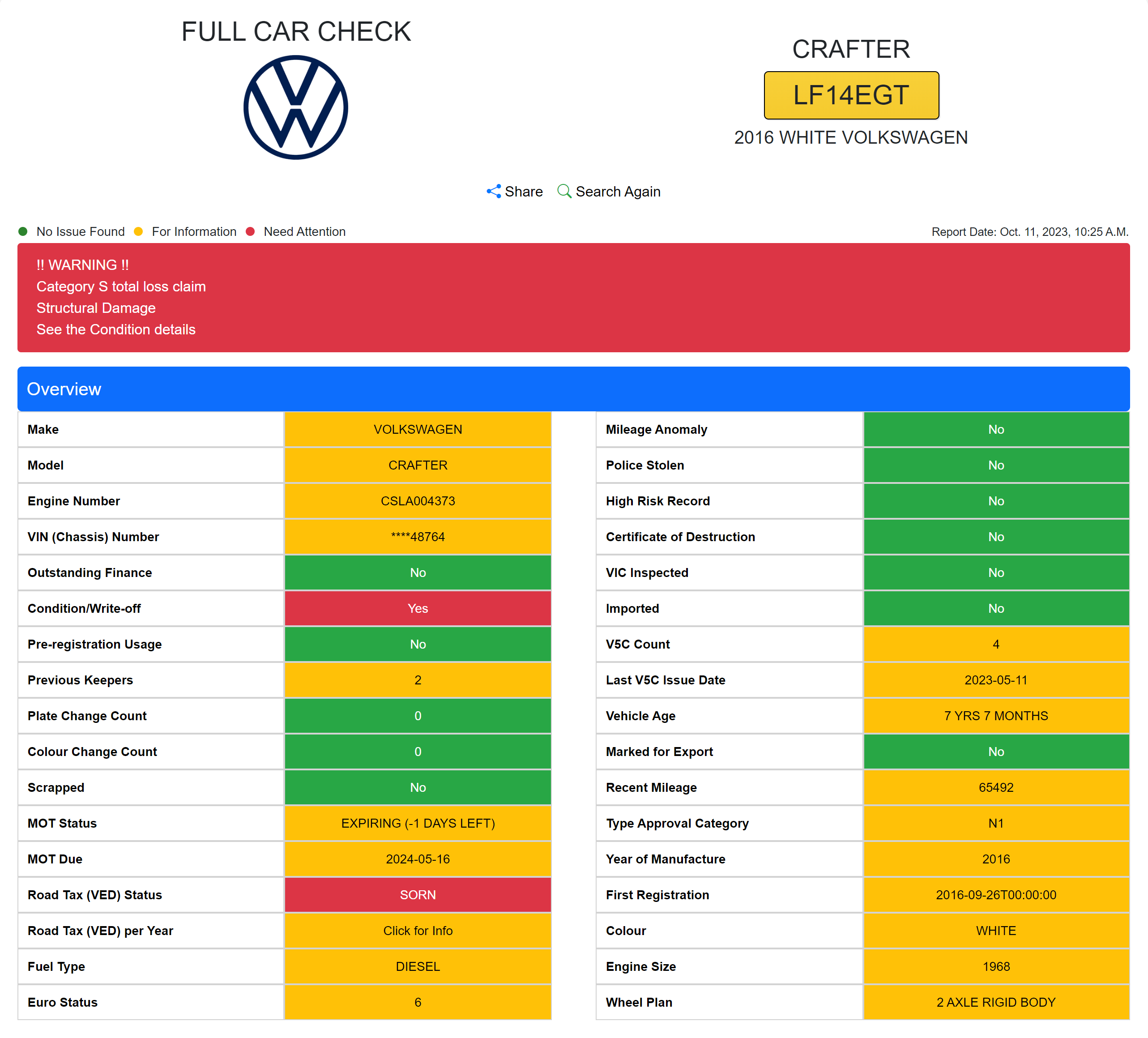
Check for Outstanding Finance
You don’t want to end up with a car that’s still tied to outstanding finance, as it could be repossessed after you’ve purchased it. Ask the seller for confirmation that the vehicle is free from any financial obligations. If you’re unsure, you can perform an HPI check that will also provide details on any finance agreements associated with the car. One recent case in Hexham involved a buyer who unknowingly purchased a car with outstanding finance, only to have it repossessed a few months later.
Buying a car with outstanding finance is a common scenario, but it’s important to understand how the process works to avoid complications. Here’s a brief guide:
1. Request a Settlement Figure
First, ask the seller to contact the finance company and request a settlement figure. This is the total amount required to pay off the loan, including any interest and fees.
2. Understand Positive vs. Negative Equity
Positive equity means the car’s value exceeds the outstanding finance. The seller can pocket the difference.
Negative equity occurs when the car’s value is less than the finance owed. The seller may need to pay the shortfall to clear the debt.
3. Early Termination Penalties
If the loan is settled early, the lender may charge early termination penalties. These fees vary by finance type, so the seller should check if any apply.
4. Paying Off the Finance
Once the settlement figure is confirmed, the finance can be paid off. If the buyer is directly involved, they should ensure the lender provides confirmation that the debt has been cleared before transferring ownership.
5. Transfer of Ownership
Once the finance is settled, the car’s ownership can be transferred, ensuring the vehicle is free of any finance.
In short, buying a car with outstanding finance requires confirming the settlement amount, checking for equity, being aware of early termination penalties, and ensuring the finance is fully cleared before the car is sold.
Buying a car with outstanding finance is quite common, especially with used cars, but it can add complications, particularly in private sales. While it’s not inherently negative, it can create uncertainty. In private transactions, the seller may not fully understand the steps required to clear the finance, leading to potential delays or issues with ownership transfer. There’s also the risk that the seller may not disclose the full outstanding balance, which could leave you with a car that still legally belongs to the finance company. To avoid these problems, always request a settlement figure from the lender and ensure the finance is fully paid off before completing the sale. It's important to get written confirmation from the finance company to ensure the vehicle is legally cleared of any finance.
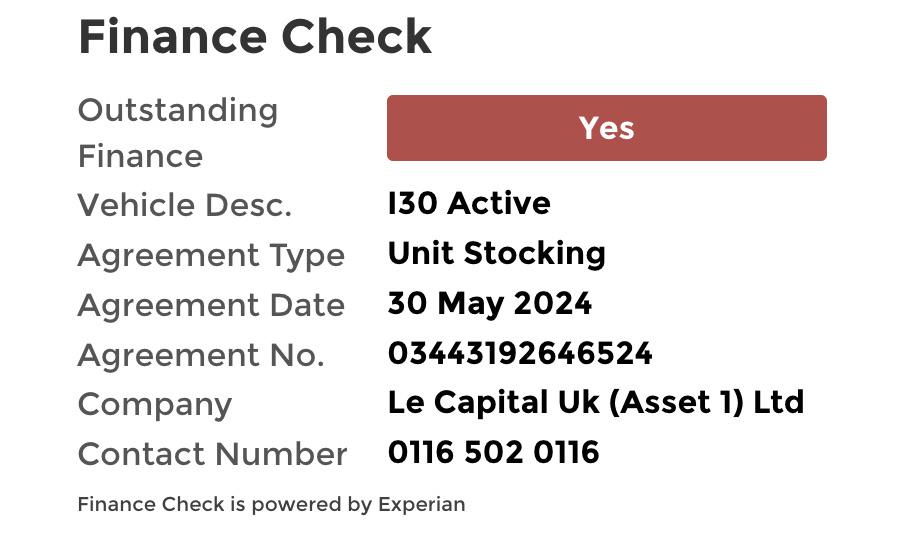
Verify the Vehicle Identification Number (VIN)
The VIN is like the car’s fingerprint—it uniquely identifies the vehicle. When buying a used car, ensure the VIN on the car matches the one on the paperwork. A mismatch could be a sign of tampering or fraud. For example, you might come across a Volkswagen Golf you would like to purchase in Hexham. If the VIN on the car doesn't match the paperwork, it could indicate that the vehicle has been stolen or altered. Always double-check to avoid such risks
A few years ago, a buyer in the UK purchased a used car privately through an online marketplace. The HPI check came back clear, but when the buyer went to inspect the car, they noticed the VIN (Vehicle Identification Number) on the dashboard didn’t match the one listed on the car's registration documents. After raising the issue with the seller, it was discovered that the car had been previously involved in an accident, and the original chassis had been replaced. The car had been legally re-registered under a new VIN, but the seller had not disclosed this important detail. The mismatched VIN numbers were a red flag, revealing the car had undergone significant repairs and was essentially a rebuilt vehicle. This situation ended in a dispute, with the buyer ultimately rejecting the car. It also highlighted how easy it is for unsuspecting buyers to overlook mismatched VIN numbers, which could point to a car with a complicated past. While the car passed the HPI check, the issue only came to light during an in-person inspection. This serves as a reminder to always check the VIN numbers carefully and ensure they match all documentation before purchasing a used vehicle—especially when buying privately, where sellers may not always provide the full history.
When checking the Vehicle Identification Number (VIN) to ensure it matches across all documents and the car itself, there are several key places to look:
1. Logbook (V5C):
The logbook, or V5C, is the official registration document for the car. The VIN should be clearly listed on the top part of the document. Check this number carefully and ensure it matches the other sources.
2. Dashboard (Windshield):
The most common place to find the VIN is on the dashboard, near the driver's side corner of the windshield. It's visible from the outside of the car, and typically, the VIN is stamped or etched into the metal frame of the dashboard. Clean the area to ensure no obstructions are hiding the number.
3. Chassis Plate:
The chassis plate (also known as the manufacturer’s plate) is usually located in the engine bay, on the front of the vehicle’s chassis, or near the car’s door frame (sometimes inside the door jamb). The VIN on this plate should match the one found on the logbook and dashboard.
4. Driver’s Side Door Frame:
On the driver’s side door frame (around the area where the door latches), there is often a sticker or plate with the VIN number and other vehicle details, like the weight and manufacturing date. This can be another reliable spot to cross-check the VIN.
5. Under the Bonnet:
For some vehicles, the VIN may also be stamped or displayed in the engine bay, typically on the bulkhead or another part of the car's bodywork. This is less common but still worth checking if you suspect the car has been tampered with.
6. Service History and MOT Records:
Checking the VIN on any service history or MOT records can also be useful. These documents should have the car’s VIN, and it can be another way to confirm its authenticity.
How to Check:
Cross-check the VIN: Compare the VIN you see in these locations with what’s listed on the V5C (logbook) and any other documents related to the car’s history. They should all match exactly.
Look for tampering signs: If the VIN appears to have been altered, scratched, or appears out of place, that could indicate the car has been involved in illegal activities, like theft or reconstruction.
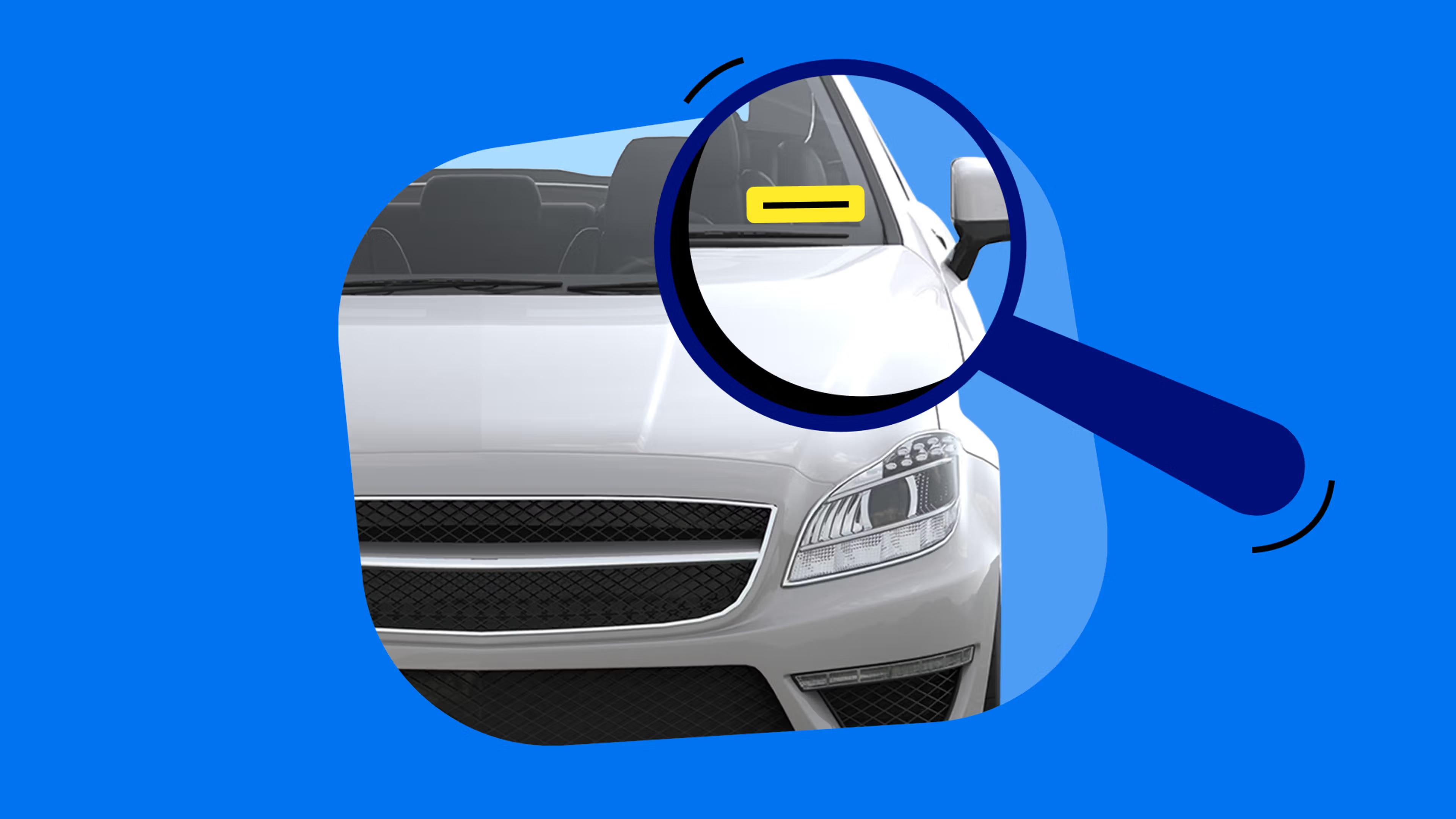
Examine service records - why double verification matters
A full-service history is a key indicator that a car has been well-maintained. Service records will give you an insight into the care the car has received over the years, including any major repairs. For instance, if you’re buying a used Audi A3 in Hexham, the service history might show that the car has been serviced regularly at an authorized Audi dealership, ensuring its condition is top-notch. On the other hand, a lack of service records could indicate neglect, leading to more repairs down the road
When reviewing service records and invoices, it's essential to check for key maintenance items like the timing belt, as well as potential issues like clocking (odometer tampering). Both of these can significantly affect the car's reliability and value.
Timing Belt
The timing belt is a critical component that controls the engine's timing, and if it fails, it can cause severe engine damage. Manufacturers typically recommend replacing the timing belt at specific mileage intervals, often between 60,000 and 100,000 miles, depending on the make and model.
Service Records: Ensure the service book and invoices show that the timing belt was replaced according to the manufacturer’s recommendations. If there's no record of it being replaced, this could lead to an expensive repair soon after purchase.
Invoices: Look for detailed invoices showing the work done on the timing belt, including parts and labor. A lack of proper documentation could indicate the timing belt wasn’t replaced when it should have been, potentially leaving you with a ticking time bomb.
Why This Matters Both the timing belt and odometer tampering are areas where neglect or dishonesty can have serious financial and mechanical consequences. Ensuring the timing belt is properly replaced and that the mileage is accurate gives you confidence that the car is in good shape and reflects its true history. Always verify these details through service books and invoices to avoid unexpected repairs and costly issues down the line.

Mileage verification: Avoid clocking scams
Clocking (Odometer Tampering) Clocking, or odometer tampering, is the illegal practice of altering a vehicle's mileage to make it appear less used than it actually is. This can significantly inflate the car's perceived value and mislead buyers into thinking they're purchasing a more reliable, less worn vehicle. While this is a serious offense, it still happens, particularly when buying a car privately.
How to Spot Clocking
Service Records: Check the recorded mileage at each service interval in the service book and compare it to the current odometer reading. If there's a significant discrepancy, especially if the mileage is lower than it should be for a car of that age, it may be a sign that the odometer has been tampered with. Inconsistencies in the service book or gaps between services are also red flags.
Invoices: Cross-reference the mileage shown in any invoices or receipts for work done on the car. A full service history is helpful, but if the mileage on the invoices doesn’t match up or appears unusually low for the car's age, it could indicate clocking.
Imported Cars and Mileage Issues
One significant issue when dealing with imported cars is that odometer tampering can be harder to detect, especially when the car has been registered in a different country first. Cars that come from countries like Ireland can have an added complication due to differences in MOT systems and registration practices.
Irish MOT System: In Ireland, the MOT system is not as stringent as the UK's, particularly when it comes to recording mileage. While the UK MOT test records the mileage every time a car undergoes a test, in Ireland, the system does not always track mileage in the same way. This means an imported car might not have a clear mileage history, making it easier for unscrupulous sellers to "reset" the mileage to appear as though the car is newer or less used.
UK Registration: When an imported car from Ireland (or other countries) enters the UK, it gets assigned a new UK registration number. The car’s mileage, however, might not be accurately reported during this process. Some dealers might exploit this gap by bringing in cars with altered mileages and registering them in the UK with seemingly "new" mileage figures. This is especially common with cars that have a clean, low-mileage appearance but may have a hidden past of tampering.
Why This Matters
Clocking is illegal, but when dealing with imported cars, it becomes more difficult to track the car's true mileage. If you're considering buying an imported car, especially from a private seller or dealer, it’s crucial to scrutinize the service records, invoices, and mileage history closely. Be aware that some imported cars may have a questionable or incomplete service history, making it harder to verify the actual mileage.
To avoid purchasing a car with altered mileage, consider getting a thorough HPI check to check for any past discrepancies, including whether the car has been clocked or has an unusual history. You should also ensure that any Irish-imported cars have complete and verifiable records from their previous ownership before they were brought to the UK. If the mileage seems unusually low for the car’s age or the service history doesn’t add up, this could indicate that the car has been clocked, and it's best to walk away from the deal.
Why This Matters
Clocking is illegal, but when dealing with imported cars, it becomes more difficult to track the car's true mileage. If you're considering buying an imported car, especially from a private seller or dealer, it’s crucial to scrutinize the service records, invoices, and mileage history closely. Be aware that some imported cars may have a questionable or incomplete service history, making it harder to verify the actual mileage.
To avoid purchasing a car with altered mileage, consider getting a thorough HPI check to check for any past discrepancies, including whether the car has been clocked or has an unusual history. You should also ensure that any Irish-imported cars have complete and verifiable records from their previous ownership before they were brought to the UK. If the mileage seems unusually low for the car’s age or the service history doesn’t add up, this could indicate that the car has been clocked, and it's best to walk away from the deal.
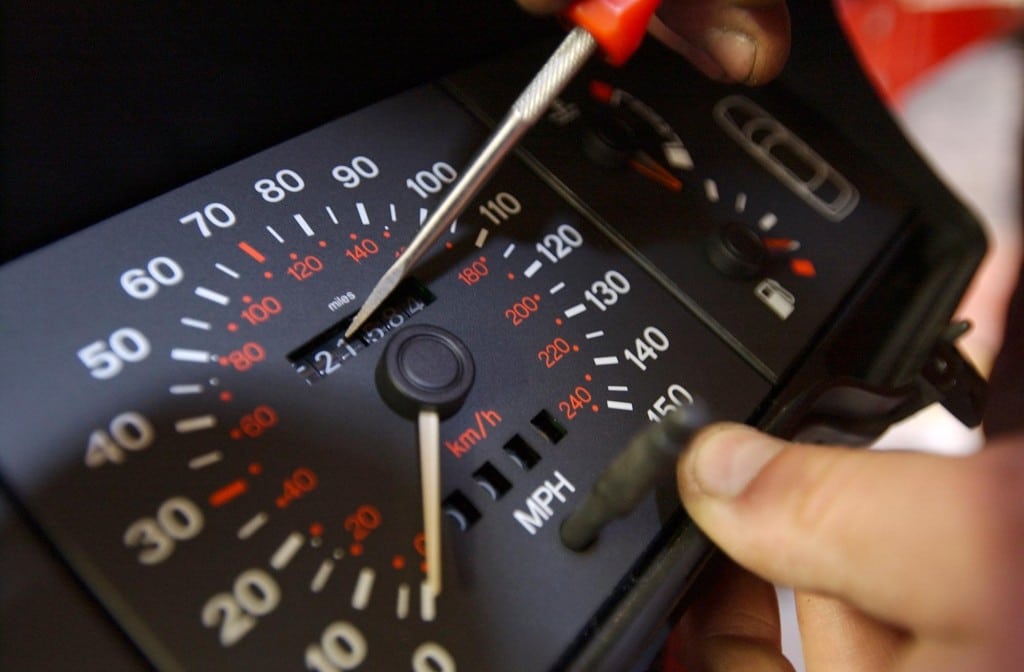
The fewer the owners, the better
A car with fewer previous owners is generally considered to have been better cared for. Multiple owners in a short period could indicate that the car had issues that led people to sell it. When considering a used car in Hexham, check how many owners it has had and assess whether the number aligns with the car's condition and price.
Case Study: Buying a Used Car in Hexham with Multiple Owners
When buying a used car in Hexham, the number of previous owners can provide valuable insight into the car's condition. Fewer owners typically suggest the car has been well-maintained, while multiple owners in a short period might indicate ongoing issues.
Consider a car with five owners in just two years. The logbook (V5C) shows ownership changes every few months, which raises concerns. By cross-referencing these dates, you can spot an unusual turnover, signaling potential problems.
HPI Check Insights
A deeper HPI check reveals:
Mileage discrepancies, possibly indicating odometer tampering.
A severe accident that led to the car being written off and repaired, then quickly resold.
Engine issues that caused the most recent owner to return the car after just two months.
Why Multiple Owners Is a Concern
This frequent change of ownership suggests unresolved issues such as mechanical failures, accidents, or unreliable repairs. The HPI check provides clarity, revealing hidden problems that may not be obvious from the logbook alone.
Conclusion
If you're considering a car in Hexham with a high number of previous owners, always check the logbook and perform a detailed HPI check. Multiple owners can be a red flag, indicating potential problems, so it's important to thoroughly investigate before making a purchase.
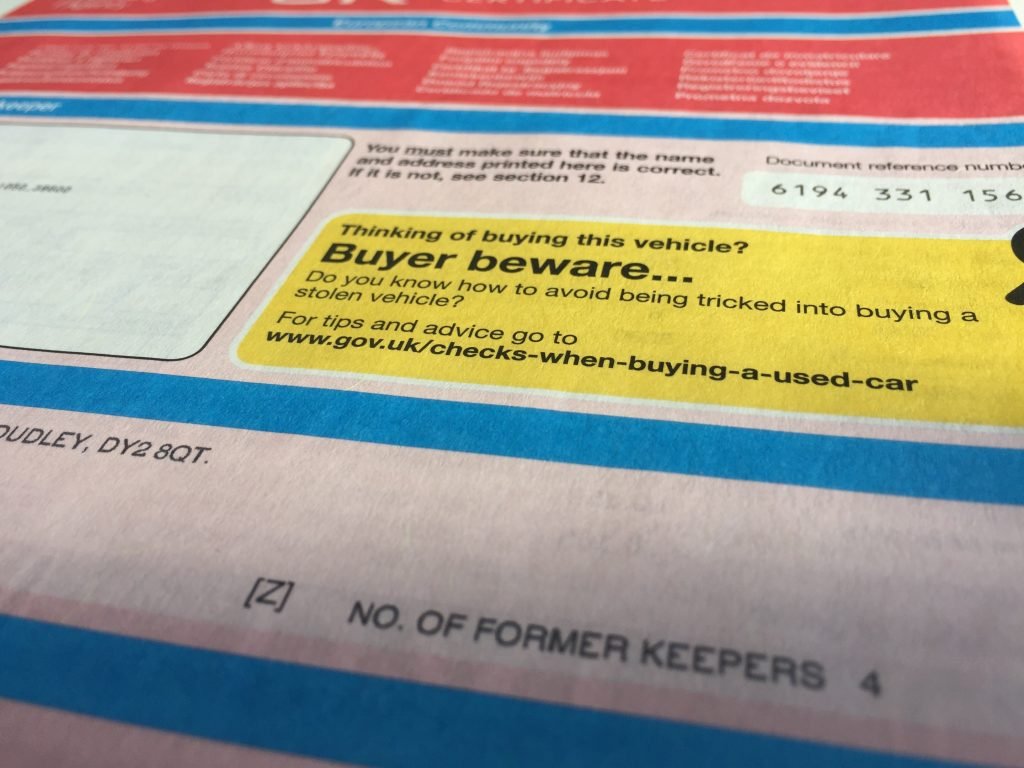
Vehicle Recall History
Vehicle recalls are sometimes necessary for safety and reliability reasons. Check whether the car has been subject to any recalls and, if so, whether those issues have been addressed. You can find this information by researching the vehicle's registration number. For instance, a 2019 Nissan Qashqai we had in stock - in Hexham has an outstanding recall for an airbag defect.
It is illegal for dealers to sell a car with an outstanding recall. The dealer must fix any recall-related issues before the car can be sold. While many recalls are free to fix, they often require you to take the vehicle to a main dealer for repairs, which can be time-consuming depending on the nature of the issue and parts availability.
For example, one notable recall involved Tesla's acceleration defect, where certain models had an issue with the accelerator pedal assembly. The pedal could potentially become stuck, leading to unintended acceleration. Tesla issued a recall to inspect and, if necessary, replace the pedal control system or related components. While the fix itself was free, it required owners to visit a Tesla service center, which could be inconvenient, particularly if waiting for parts or appointments.
In addition to checking the MOT records and any recall notification letters, there are several ways to ensure you are aware of outstanding recalls for a used car you're considering buying:
Manufacturer's Website: Many car manufacturers have online tools where you can enter the vehicle’s registration number or VIN (Vehicle Identification Number) to check if there are any outstanding recalls for that specific car. This is often the most direct and reliable way to get recall information.
HPI Check: When you perform an HPI check on the car, it will often include a section that highlights any outstanding recalls. This will give you an added layer of confirmation, ensuring no important safety issues are overlooked.
Dealerships: If you're buying from a dealer, they should be able to verify whether there are any recalls associated with the vehicle. You can ask the dealer for confirmation and proof that any outstanding recalls have been resolved. Be aware, however, that you should always follow up with the manufacturer or a third-party check to ensure the dealer's information is accurate.
National Vehicle Databases: Some countries or regions have public databases that track vehicle recalls. For example, in the UK, you can check gov.uk or other governmental websites that provide recall information. In the U.S., the National Highway Traffic Safety Administration (NHTSA) has an online tool for checking recalls.
By using these resources, you can ensure that any outstanding recalls are addressed before finalizing your purchase, and that the vehicle is safe and roadworthy. Always confirm with the manufacturer or a reliable third-party service to ensure you have the most up-to-date and accurate recall information.
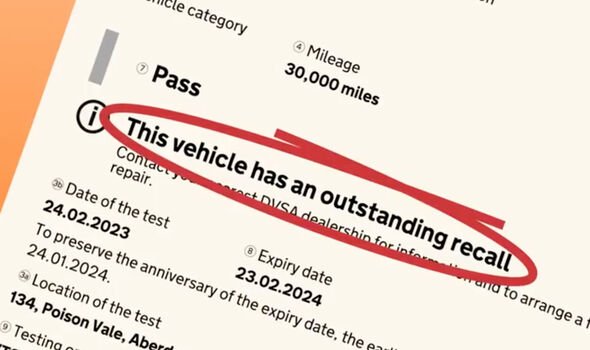
Write-off categories: dont overlook them
Before purchasing, it’s also important to check if the vehicle has ever been written off. Write-off cars are often cheaper, but they may have hidden damage or safety issues. You can check the write-off category by reviewing the car’s history report. For example, a Ford Focus in Hexham might have been written off in a minor collision and repaired, but checking the write-off category can reveal whether it was a Category S (structural damage) or Category N (non-structural damage). Knowing this can influence your decision.
CAT S vs. CAT N: What You Need to Know When Buying Used Cars in Hexham
When shopping for used cars in Hexham, it’s essential to understand the differences between CAT S and CAT N vehicles. These categories refer to cars that have been involved in accidents and then repaired. Understanding these classifications can help you make an informed decision, as they significantly affect both the price and safety of the car.
What is a CAT S and CAT N Vehicle?
CAT S (Structural Damage): A CAT S car has experienced significant structural damage, often affecting the frame or chassis. While the car may have been repaired and is now roadworthy, the structural integrity might not be as strong as it was before the accident. As a result, CAT S cars typically see a 50% price reduction compared to similar, non-categorised cars. This is because buyers may be wary of hidden issues that could arise from the initial damage.
CAT N (Non-Structural Damage):
A CAT N vehicle has sustained non-structural damage, such as cosmetic issues or damage to parts like body panels or lights. While the damage may still have been significant, the vehicle’s structure is generally intact. CAT N cars usually experience a 35% price reduction when compared to their non-categorised counterparts, as the risk is lower than with CAT S vehicles.
How These Categories Affect Used Car Prices in Hexham
The categorisation of a vehicle can significantly impact its market value. CAT S cars are generally sold at a 50% lower price, reflecting concerns over potential long-term damage or structural weaknesses, even after repairs. On the other hand, CAT N cars are cheaper by around 35%, due to non-structural damage that was repaired. While these vehicles may be in better condition than CAT S cars, they still carry some risk for buyers.
The Risks of Buying CAT S and CAT N Cars in Hexham
While buying CAT S and CAT N vehicles can be a cost-effective way to purchase a car, it’s important to understand the risks, especially when buying privately or from dealers without a solid reputation. Some of the risks include:
Substandard Repairs: Not all CAT S and CAT N cars are repaired to a high standard. Some unscrupulous sellers may cut corners on repairs, which could affect the vehicle's safety and performance. “Cowboy” dealers may attempt to sell cars that have been poorly repaired, and these vehicles may have lingering issues that could cost you later.
Hidden Damage: Even CAT N vehicles can have hidden problems. Poorly repaired bodywork or unresolved electrical issues may crop up after the sale, leading to unexpected repair costs down the line.
No Warranty: Many reputable dealers avoid selling CAT S and CAT N cars, meaning you may have limited or no warranty coverage. This could leave you responsible for any future repairs, which may be costly, especially with CAT S cars.
Why Reputable Dealers in Hexham Avoid Selling Categorised Cars
Most reputable used car dealers in Hexham prefer to sell cars with a clean history and avoid categorised vehicles. This is because selling CAT S or CAT N cars presents higher risks, including potential safety concerns and the possibility of poor repairs. By avoiding these cars, reputable dealers ensure that they offer vehicles that are safe, reliable, and free from significant past damage.
Conclusion
When buying used cars in Hexham, it’s crucial to understand the difference between CAT S and CAT N vehicles. While CAT N cars may seem like a safer bet, both categories come with risks, including the potential for substandard repairs and hidden damage. Always check the vehicle’s history, and consider getting a pre-purchase inspection from a trusted mechanic. If you're looking for a reliable and safe used car, it's often better to choose one that hasn’t been categorised, as these vehicles are typically sold by more reputable dealers and come with fewer risks.

Researching common model issues
When buying a used car in Hexham, it's not just about checking the vehicle’s history and condition; you should also do your research on the specific make and model. Each vehicle can have its own set of common issues, and knowing these potential problems before committing to a purchase can save you from unexpected repair costs down the line.
Researching Common Issues by Make and Model
Before you buy, it’s a good idea to explore online forums, reviews, and user groups for insights into recurring issues with the specific make and model you’re interested in. For example, some Mini Cooper models have been known to suffer from gearbox issues or timing chain problems that can be costly to repair. By researching this beforehand, you can check for these issues when inspecting the car, helping you avoid an expensive repair headache later on.
Common Engine Faults to Watch Out For
As car buyers, we’ve learned to spot potential issues in certain engine types. For instance:
Ford Ecoboost Engines (Fiesta, B-Max, Focus): The Ford Ecoboost engines, found in models like the Fiesta, B-Max, and Focus, are popular for their fuel efficiency and performance. However, there have been reports of turbocharger failures, oil leaks, and coolant system issues. Some models have also experienced issues with the timing belt or timing chain, which can lead to engine failure if not addressed. When buying a used vehicle with an Ecoboost engine, make sure the turbocharger has been serviced regularly and look for any signs of oil leakage or cooling system issues.
Land Rover Ingenium Engines: Land Rover’s Ingenium engines, which power models like the Discovery and Range Rover Evoque, are known for their impressive power and efficiency. However, there have been reports of excessive oil consumption, timing chain issues, and EGR valve failures. These issues can cause poor performance and engine damage if not maintained properly. It’s essential to check the car's service records for any repairs or recalls related to the Ingenium engine.
Known Scandals and Recalls
In addition to common issues, some models have been involved in scandals or widespread recalls that may affect their overall reliability:
Volkswagen Dieselgate: Many Volkswagen diesel models were affected by the Dieselgate scandal, where the company was found to have installed software that manipulated emissions tests. This led to recalls and repairs on affected vehicles, so it's crucial to check if the specific car you're looking at was involved. A used car that has had proper repairs done is generally safe, but you should ensure it's been fully addressed.
Ford PowerShift Transmission Issues: Some models with the Ford PowerShift transmission (found in Focus and Fiesta models from 2011-2016) have had a history of clutch failures, leading to jerky gear shifts and eventual transmission breakdowns. If you're looking at one of these cars, it's essential to ask about the transmission's history and whether any issues have been fixed.
How to Avoid Buying a Car with Hidden Issues
Check Service Records: Make sure the car has a full service history, especially for common issues known to affect that model. Ask for receipts of any repairs or recalls.
Get a Pre-Purchase Inspection: A trusted mechanic can identify hidden faults, even if the car looks good on the surface. They can check for signs of engine trouble, transmission issues, or electrical faults specific to certain makes or models.
Stay Updated on Recalls: Use resources like gov.uk or manufacturer websites to check if any recalls have been issued for the model. Ensuring that any recalls have been addressed can save you from potential safety hazards and costly repairs.
When buying a used car in Hexham, it’s vital to research the specific make and model you're interested in. Knowing the common faults associated with certain engines and models—like Ecoboost engines in Ford Fiesta or Ingenium engines in Land Rovers—can help you avoid unexpected repair bills. Additionally, being aware of past scandals or recalls, such as the Volkswagen Dieselgate or Ford PowerShift transmission problems, can save you from buying a car with unresolved issues. Always ask for service records, consider getting a pre-purchase inspection, and ensure that any necessary recall repairs have been completed before making your purchase. This extra research will help you find a reliable used car that fits your needs.

